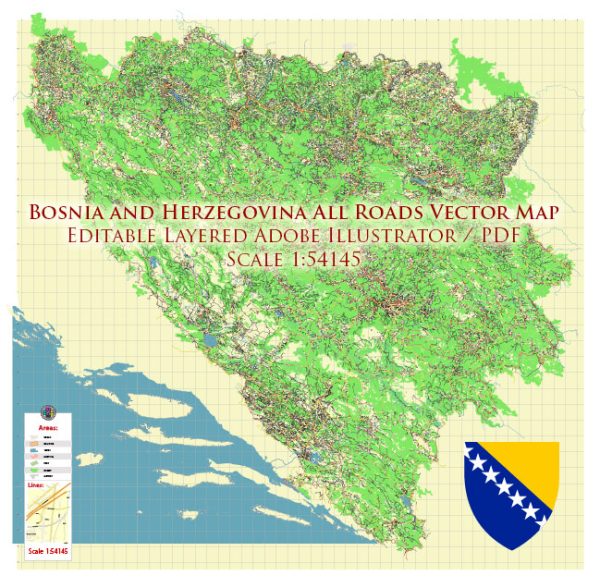Bosnia and Herzegovina is a country located in Southeastern Europe on the Balkan Peninsula. Overview of its economic situation at that time. Please note that economic conditions can change, so it’s essential to verify this information with more recent sources for the most up-to-date details.
1. Mixed Economy: Bosnia and Herzegovina has a mixed economy with both public and private sector involvement. The state-owned enterprises are still significant in certain industries, while the private sector is increasingly playing a more prominent role in the country’s economic development.
2. Key Industries:
- Services: The services sector, including tourism, has been a critical component of the economy. The tourism industry in cities like Sarajevo, Mostar, and along the Adriatic coast contributes significantly to the country’s GDP.
- Manufacturing: Manufacturing industries such as automotive, textiles, and metal processing have been important for the economy.
- Agriculture: Agriculture plays a role in the economy, with products like wheat, maize, fruits, and vegetables being produced.
- Mining and Energy: The country has some mineral resources, and the energy sector, including coal, hydroelectric power, and renewable energy, is also significant.
3. Economic Challenges:
- Political Complexity: Bosnia and Herzegovina’s political structure, which includes two semi-autonomous entities, the Federation of Bosnia and Herzegovina and Republika Srpska, has often led to political gridlock and difficulties in implementing economic reforms.
- Corruption: Corruption has been a significant challenge in the country and has deterred foreign investments and economic growth.
- High Unemployment: High unemployment rates have been a persistent issue in the country. Many young people have emigrated in search of better economic opportunities.
4. Currency: The currency used in Bosnia and Herzegovina is the Convertible Mark (BAM), which is pegged to the Euro (EUR).
5. Trade: The country’s trade partners include neighboring countries in the Balkans, as well as EU member states.
6. Economic Growth: Economic growth in Bosnia and Herzegovina had been relatively slow, and the country faced many structural economic challenges.
7. Foreign Aid: The country has received significant foreign aid and investment to support its economic development, particularly in the aftermath of the Bosnian War (1992-1995).


 Author: Kirill Shrayber, Ph.D.
Author: Kirill Shrayber, Ph.D.